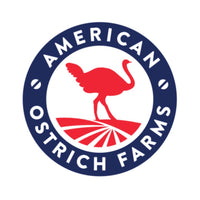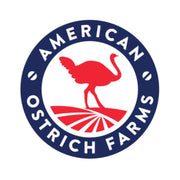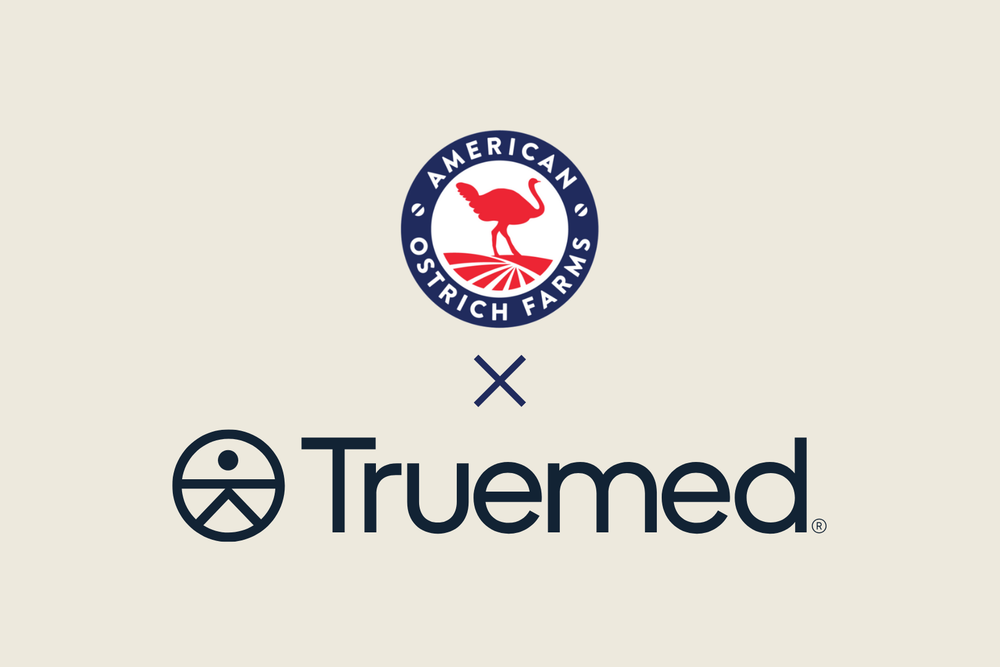The bird is the word.
Beef can be bad for your health and the environment. Excessive amounts of saturated fat increases your risk for diabetes and heart disease. Cows produce more methane gas than any other livestock, fueling climate change.
We need to transition from beef to other red meats. You may have already started buying chicken, pork, and seafood. But there is another meat you should try, and it tastes just like beef so you can satisfy your red meat cravings without sacrificing your health and the planet.
Ostrich is a healthier and more sustainable red meat option than beef and is becoming one of the most popular meats on the market. Yet many consumers have questions about it.
Here is a brief guide to everything you wanted to know about ostrich meat.
THE OSTRICH FARM
The ostrich is the world's largest and fastest bird. It can grow up to eight feet tall, reach running speeds over forty miles per hour, and weigh more than 400 pounds. It is a flightless bird, so it relies on running to move around.
The ostrich is native to Africa but is tolerant of many climates. Commercial ostrich farms exist all around the world, though most are outside of the United States. More than 250 farms in the United States have Breeding ostriches and grow their own ostrich chicks.
Ostriches are primarily herbivores, although they will eat insects and even small animals! Most farms feed their ostriches a primarily alfalfa-based diet, which can include grains, legumes, and other common livestock feed ingredients.
Modern ostrich farms are generally compact and small-scale. Most ostrich farmers grow other animals and products to supplement their income. The ostrich farming industry went through a boom and bust in the 1990s and 2000s and has grown rapidly since then as demand for healthy, sustainable meat continues to increase.
OSTRICH MEAT
Though the ostrich is large, most of its meat comes from its thigh and hindquarter. Similar to other livestock such as beef cattle, part of the ostrich meat is ground and part of it is more tender and suitable for steaks and filets.
Ostrich meat is red because it contains myoglobin, a protein that turns red once exposed to oxygen. The USDA classifies ostrich meat as technically poultry, but it looks and tastes almost exactly like beef and is a perfect 1-1 replacement for beef in most recipes that call for red meat.
Ostrich meat is very lean - the ground steak is typically 95% lean and filets can be up to 98% lean! It tastes similar to beef, but without the marbled fat. Most people can't even tell the difference between beef and ostrich.
Ostrich absorbs marinades and seasonings well. Some eaters may find plain ostrich meat bland. Try cooking it on its own, then add seasonings according to your taste.
To cook ostrich meat "rare", ostrich internal temperature should reach 120-125F, and for medium-rare, cook to 125F-130F. Since ostrich is so similar to beef, if you prefer your beef medium-rare, you'll also like your ostrich that way. The only difference in cooking ostrich meat is that it will cook more quickly than beef due to the lower fat content, AND ostrich meat does not shrink down like beef, so you get more cooked product, ready to eat.
Use a meat thermometer to check for doneness. Ostrich meat is very red, so it is hard to tell its doneness by eye alone.
THE NUTRITION OF OSTRICH MEAT
Ostrich meat is far healthier than beef. A serving of ostrich steak has two to three grams of fat and 110 to 125 calories. A serving of beef steak has four to five grams of fat and 125 to 130 calories.
A serving of ground ostrich meat has nine grams of fat and 165 calories, while a small portion of ground beef has 15 grams of fat and 250 calories.
Ostrich meat is high in iron, protein, and zinc. Ostrich meat is also low in cholesterol.
Ostrich is compatible with the paleo diet. People with an alpha-gal allergy to red meat can eat ostrich because that allergy only pertains to mammalian meats like beef, bison, and elk.
THE SUSTAINABILITY OF OSTRICH MEAT
Ostrich meat has a very high degree of environmental sustainability, especially when compared to beef. Beef is extremely resource-intensive, requiring tremendous amounts of human, land, and energy inputs for production. Beef production releases many multiples more greenhouse gases than pork. chicken, or any other protein.
Producing one pound of ostrich meat requires dramatically less water, feed, and land, and creates far less greenhouse gas emissions and waste. Beef cattle, in particular, are one of the leading causes of several forms of environmental destruction worldwide. Ostrich leaves a fraction of the environmental footprint of beef, by using 1/3 the fresh water, 1/50 the land, and emitting less than 1/10 the greenhouse gases per pound produced.
Ostriches require only one-quarter of the feed as grassfed cows to produce the same amount of meat and they reach market-readiness 250 days sooner than cows, making them much easier on the land.
Enterprising ostrich farmers work hard to produce a great deal of value-added byproducts from all parts of the ostrich. This enables ostrich producers to make more than 130 pounds of product from a 250-pound ostrich, while a 1,200-pound cow produces only 490 pounds of product. Since an ostrich yields eleven percentage points more of its total weight than a cow, fewer valuable resources go to waste.
Ostrich is the single most sustainable red meat on the market. Its sustainability is comparable to poultry, yet has all the cravable red meat characteristics as the most premium beef.
OSTRICH DOES NOT GO TO WASTE
Ostrich produces more than just meat. Farmers and manufacturers use almost every part of the ostrich, producing virtually no waste.
Pets love ostrich meat and other byproducts. As a lean source of protein chocked full of vitamins, minerals, and amino acids, ostrich is ideal for a sustainable and nutritious diet for all carnivorous pets. You can buy freeze-dried treats, jerky, and eggs, and you can give your dog an ostrich bone or neck to chew on for hours.
Ostrich oil, derived from fat, is very moisturizing. It has Omega-3 fatty acids that hydrate deeply into your skin. You can rub ostrich oil by itself onto your skin, and you can buy bars of soap made from ostrich oil.
Ostrich eggs are cooked similar to chicken eggs, though they are not cooked often. Ostrich eggshells have been used as decorative items since the time of the Ancient Egyptians. You can paint, draw, and even carve these huge, thick eggshells to use as a lamp or other unique sculpture or decoration.
Ostrich hides are also tanned and made into premium leather products. Many ostrich farms - particularly in South Africa - produce ostriches primarily for the leather to make bags, boots, and wallets.
OSTRICH MEAT FOR SALE
Ostrich meat is the silver bullet of the animal protein world. It is far healthier for consumption than other red meats and is more sustainable than any other red meat.
Compared to other premium red meats, this special meat is affordable and particularly easy to order online at www.AmericanOstrichFarms.com.
Shop for American Ostrich Farms products here.






